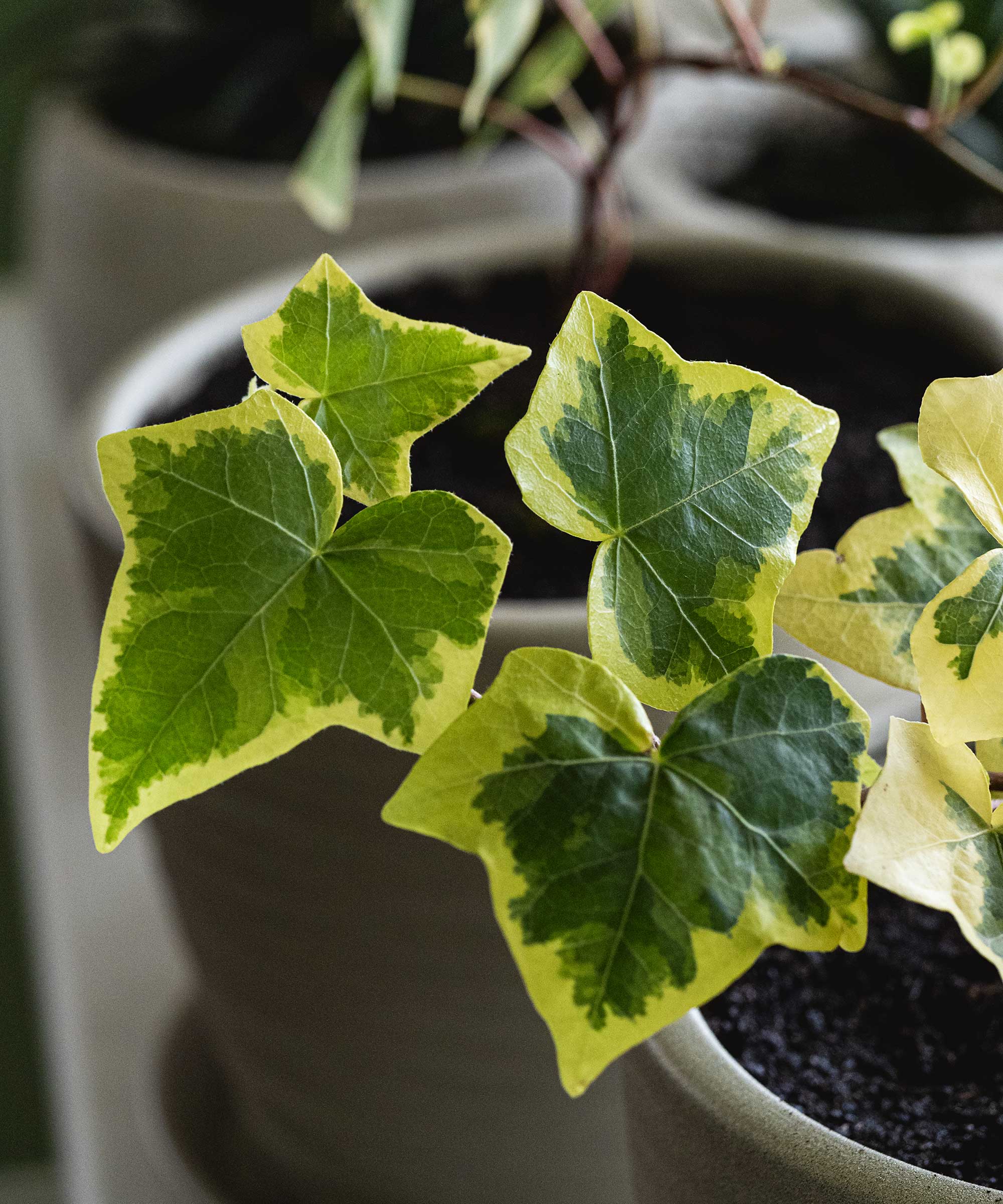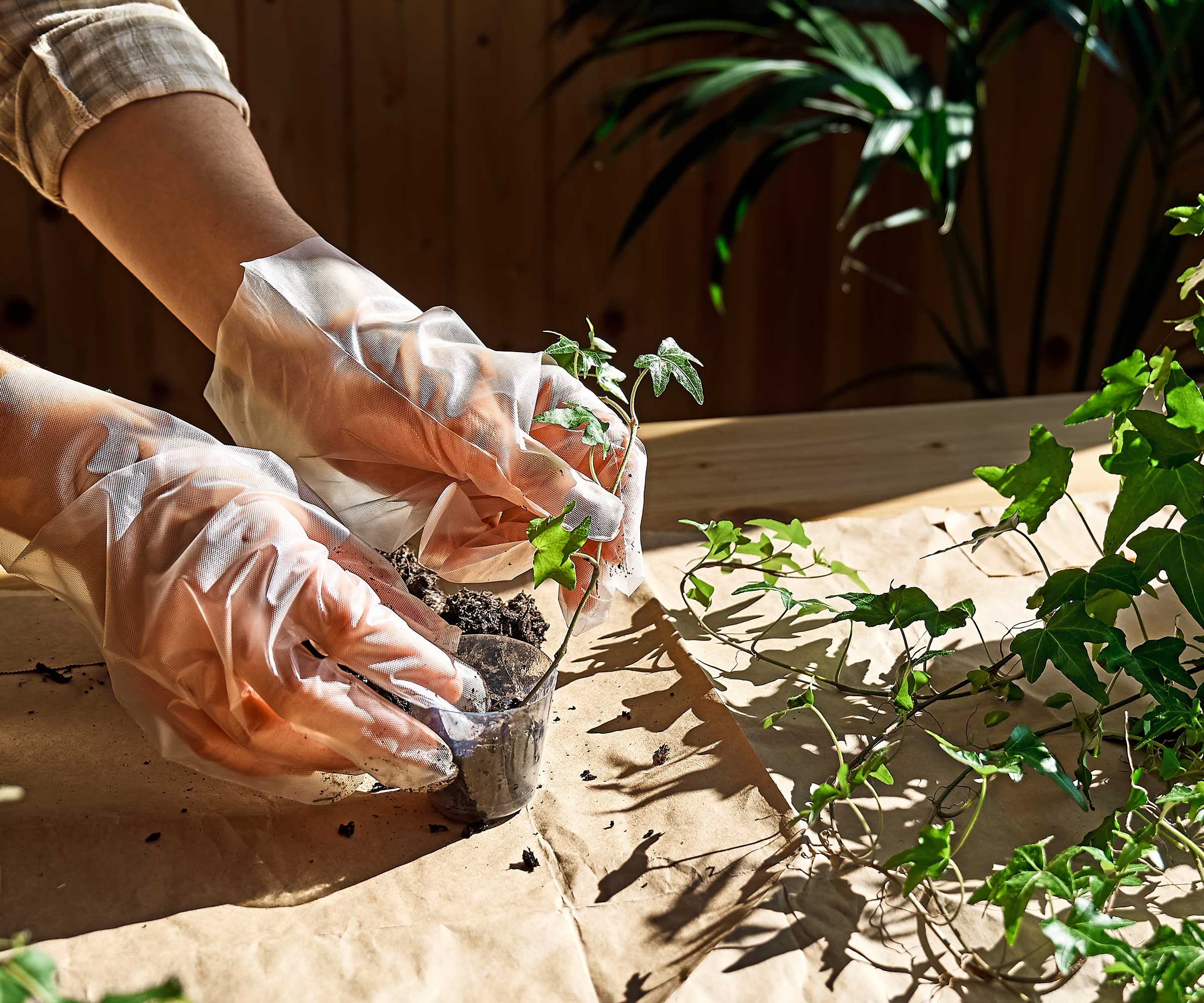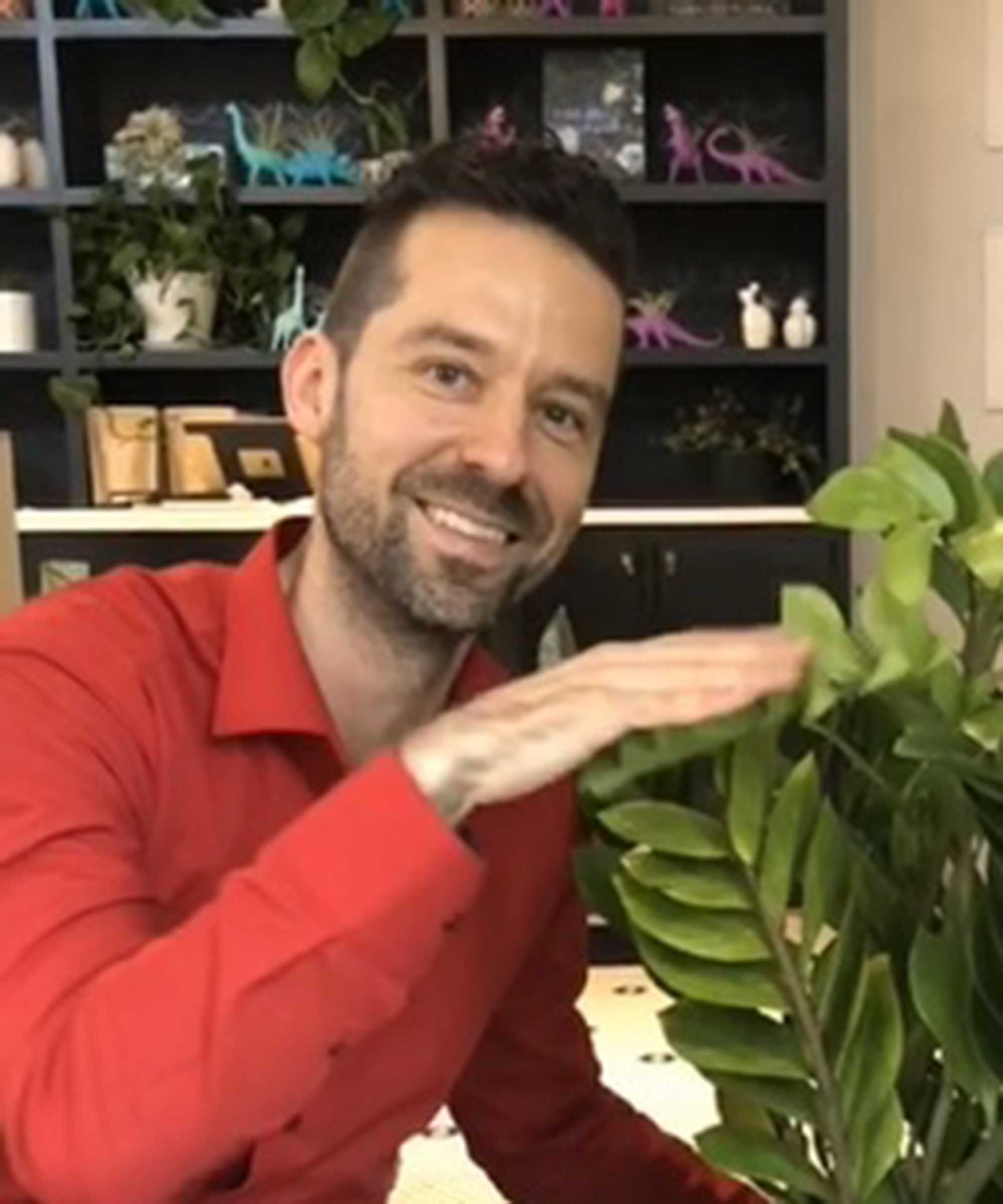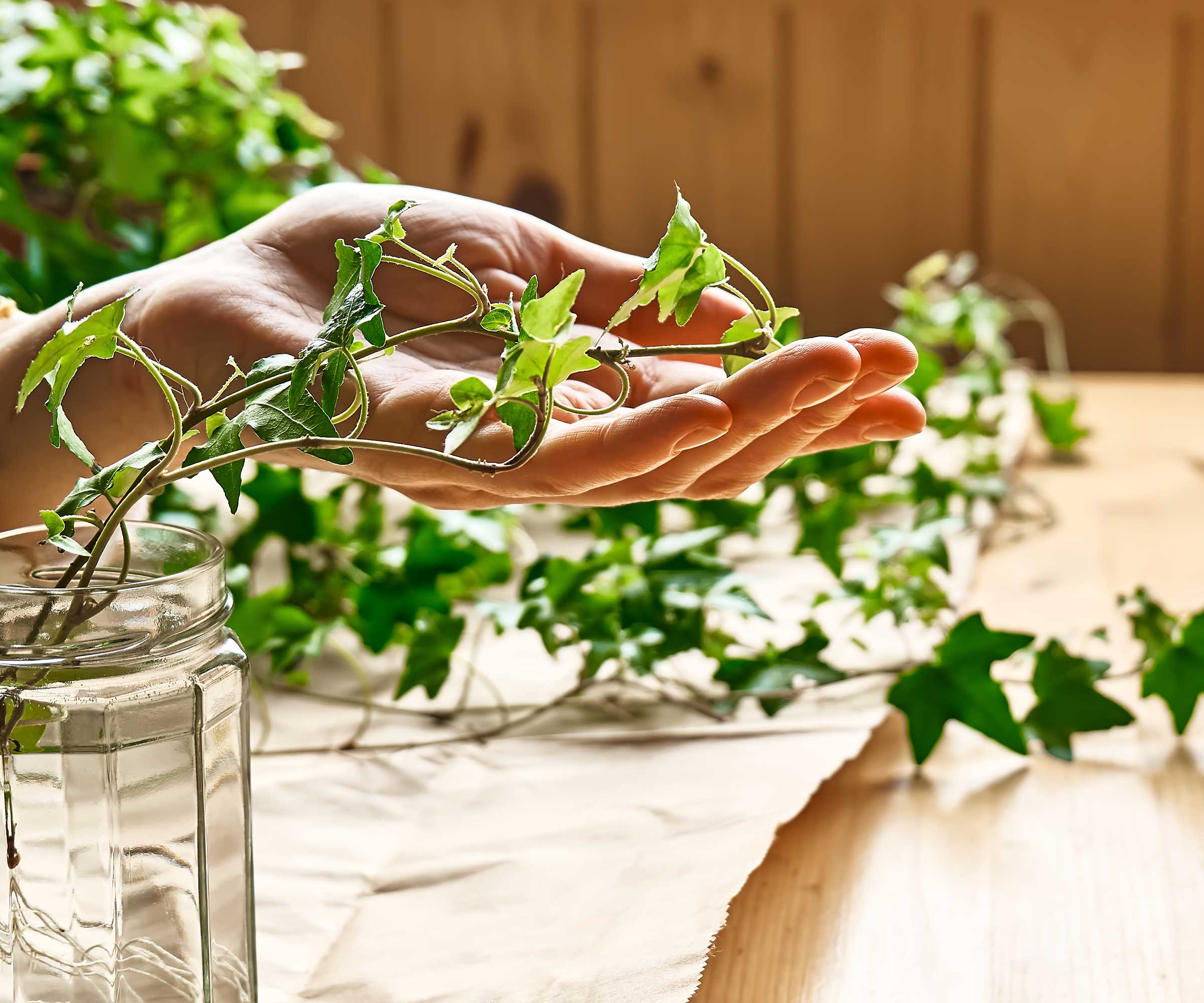How to grow ivy from cuttings – easy ways to propagate these trailing plants
Expand your plant collection – both indoors and out – with these simple ivy propagation tips


If you already have an ivy or two, you can make more from cuttings – a popular propagation method. The process is simpler than you might expect: all you need to do is remove small sections of stem and give them the right conditions to develop roots of their own. And, as is the case with many plants, once you've taken cuttings from your ivy, you can choose to root them in either soil or water.
It's worth giving it a try, as these low-maintenance plants are well-suited to all sorts of situations. Once the plant cuttings have established, your new ivies will make perfect trailing plants for hanging baskets both indoors or out, or excellent 'spiller' plants in fall containers. And, due to their fast-growing and evergreen nature, they're ideal for hiding an ugly wall, too.
Just remember to check that it's not considered an invasive plant in your area before planting it outdoors.

Ivy is an easy-care plant for interior schemes as well as backyards
Propagating ivy – two ways to try
Ivy is an easy plant to propagate with these beginner-friendly methods. Wear gardening gloves while doing so, as these plants can irritate the skin.

Some varieties of ivy are attractively variegated
Growing ivy cuttings in soil
Growing ivy cuttings in a potting mix is often more successful than propagating them in water, as the newly developed root systems will be more robust.
Autumn Hilliard-Knapp of Perfect Plants Nursery shares her tips on how to do it:
- Using clean and sharp garden shears, make a cut just below a node on the stem. The cutting should be around 6in long. Remove any lower leaves near the cut end (you don't want any to be buried in the soil).
- Fill a small container with a well-draining potting mix. Moisten the mix, but ensure it is not waterlogged. Poke a hole in the center of the mix using a stick or your finger.
- An optional step is to dip the cut end of the ivy cutting in a rooting hormone powder or gel to promote root development.
- Insert the cut end of the ivy cutting into the prepared hole in the potting mix, gently pressing the mix around the stem to ensure stability.
- Place the container in a location with bright, indirect light. Avoid direct sunlight because it can scorch the cutting.
- It's important to keep the humidity high around the cutting to promote root growth. You can achieve this by covering the container with a clear plastic bag or using a propagation dome (similar to when propagating umbrella plants). Mist the cutting and the potting mix regularly to maintain moisture. However, make sure the potting mix is not waterlogged.
- To check if the cutting has successfully rooted, give it a gentle tug – you should feel some resistance. You can then transplant it into a larger pot or a well-prepared outdoor garden bed.

Autumn is a horticulture specialist and marketing professional at Perfect Plants Nursery. With four years of experience in the horticulture industry, she has developed a passion for helping people create beautiful indoor and outdoor spaces to enjoy. Her expertise in horticulture encompasses a broad range of activities, including plant care and selection, landscape design, and maintenance.

Cuttings can be potted up into soil
Growing ivy cuttings in water
Propagating ivy cuttings in jars of water allows you to watch the root systems develop over time. Not only is this interesting and gives a real sense of reward, but it also makes it easier to know when they're ready to move into small pots of soil.
As an alternative to jars you may already have at home, you could invest in a stylish water propagation station – this one from Renmxj Store at Amazon is well-rated.
'Replace the water at least once a week, or more often if it becomes dirty,' says Vladan Nikolic of the Mr. Houseplant blog. When the roots are 2-3in long, you can plant the stem cuttings into soil, he adds.
When using this method for any plant, it's essential to steer clear of the common water propagation mistakes to increase your chances of success.

Vladan Nikolic, otherwise known as Mr. Houseplant, is a houseplant expert with over 10 years of experience. He is the Founder of the houseplant care blog MrHouseplant.com and also an influencer who helps newcomers in the houseplant world become great plant parents. You can find him on Instagram, TikTok, Youtube, Facebook, Twitter and Pinterest.

Ivy can be propagated in small vessels of water
FAQs
How long does ivy take to grow from cuttings?
If conditions are right, ivy cuttings should show signs of growth within six to eight weeks.
Are there other ways to propagate ivy?
Propagation via cuttings is the easiest and most popular way to grow more ivies for free.
Aside from taking cuttings, it's also possible to grow more ivies by sowing seeds, which are found within the blue-black berries that these plants produce. However, this is more time-consuming and complicated, as it's usually advised to store them somewhere cold for a month or two, and then soak them for 24 hours before planting them.
An alternative option is to propagate ivy by layering – a technique that can also be used for propagating hoyas (another trailing plant). 'Simply bend a stem down to the soil while still attached to the parent plant,' instructs Tony O'Neill of Simplify Gardening. Remove a few of the leaves, then secure this section with a U-shaped stake and cover it with soil. Roots will develop from the nodes, Tony says. 'Once established, you can sever the new plant from the parent.'
Looking for more ways to get additional greenery without extra cost? Many other plants can be propagated from cuttings – from outdoor roses and hydrangeas to indoor beauties such as monstera, spider plants, and peace lilies.
Sign up to the Homes & Gardens newsletter
Design expertise in your inbox – from inspiring decorating ideas and beautiful celebrity homes to practical gardening advice and shopping round-ups.

Holly started writing about gardening five years ago, and she is a regular contributor to Homes & Gardens. She has also written many gardening features for Woman & Home and Real Homes, too. She has previous experience as a professional gardener, where she helped to plant and maintain private gardens. Holly has also looked after allotment plots over the years and loves to grow her own flowers and veggies from seed. In her spare time, she enjoys visiting local gardens, botanical drawing, and tending to her ever-growing collection of houseplants.
-
 Martha Stewart's intelligent cabinets 'take every inch into consideration' – their 'visually light' style will solve your small kitchen storage problems
Martha Stewart's intelligent cabinets 'take every inch into consideration' – their 'visually light' style will solve your small kitchen storage problems'Every kitchen can be beautiful and functional, no matter what the size': 9 years since sharing her clever storage, Martha's cabinets are just as beautiful
By Megan Slack
-
 This once-dated kitchen is now a timeless space with the coziest details – and its the classic color palette that's made it a chic, welcoming space
This once-dated kitchen is now a timeless space with the coziest details – and its the classic color palette that's made it a chic, welcoming spaceWarming colors and natural materials combine to create this enduringly classic kitchen scheme
By Molly Malsom